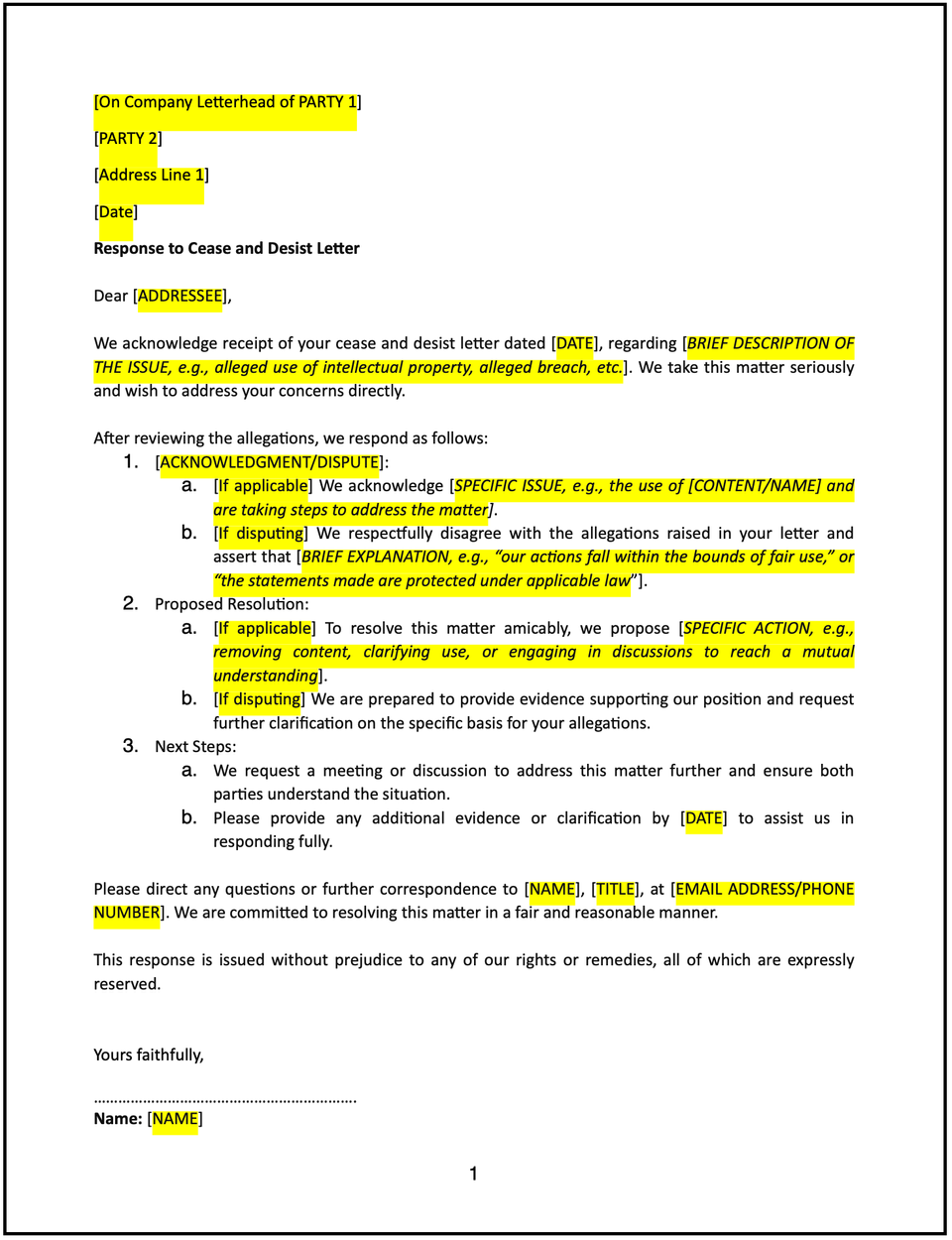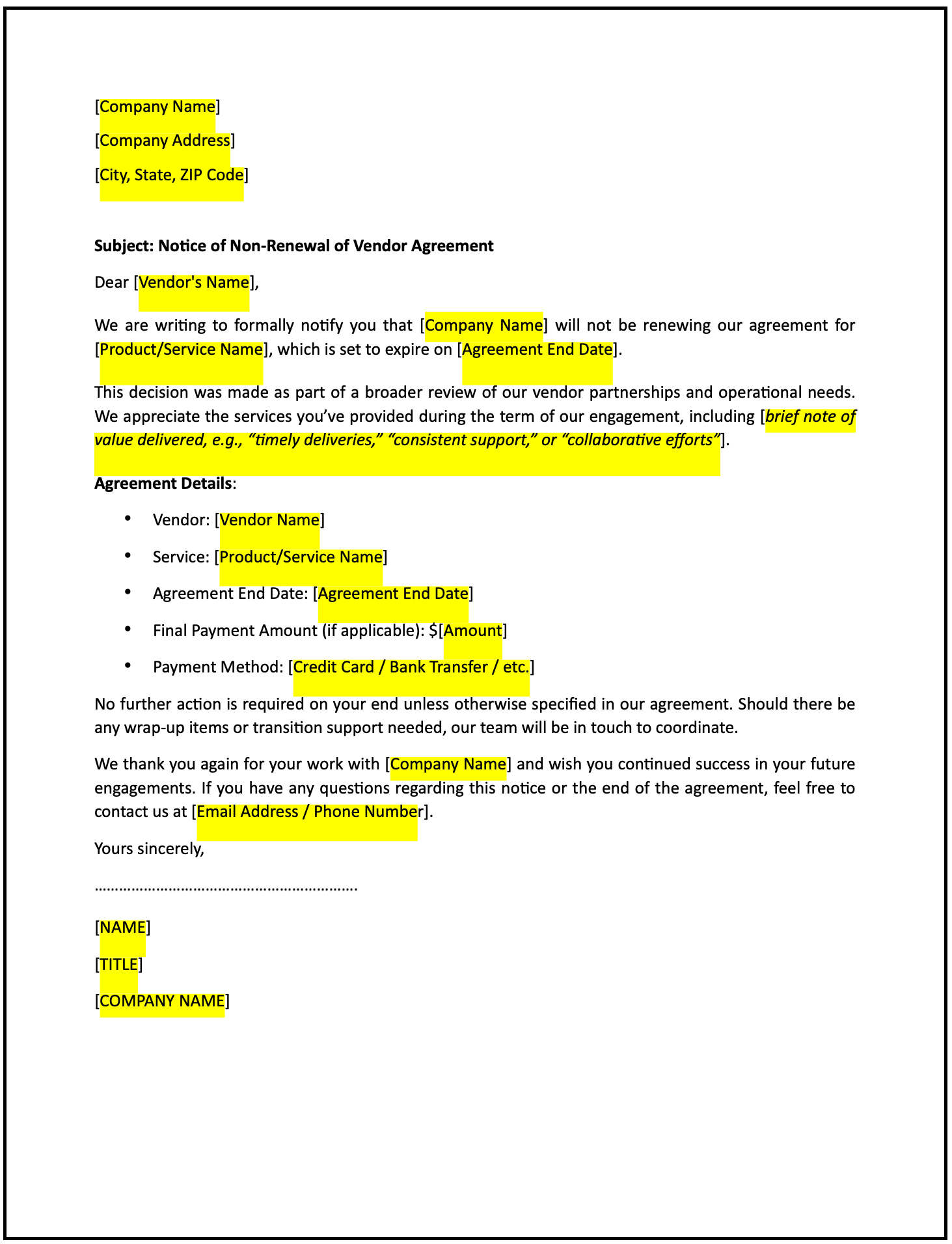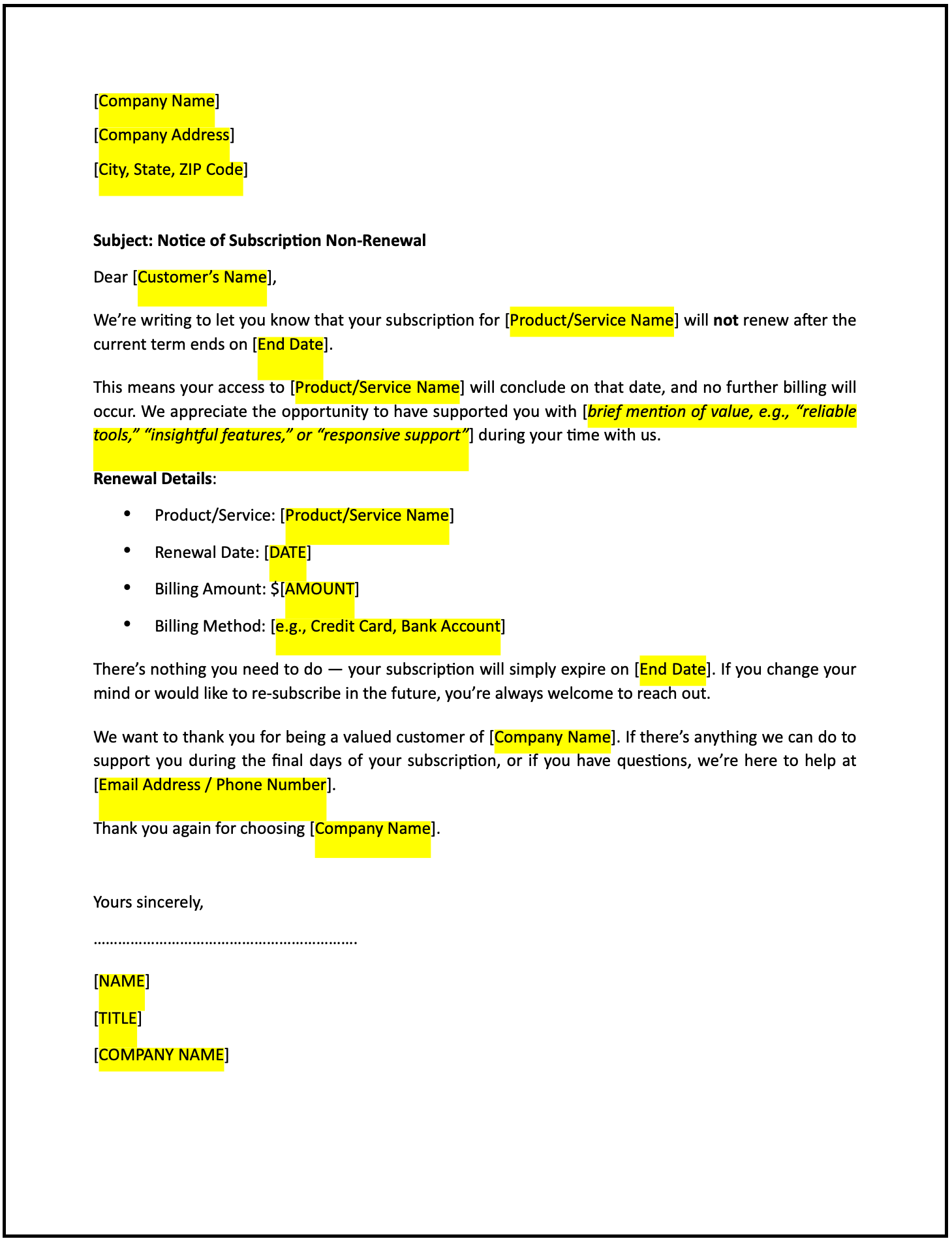Response to cease and desist letter: Free template

Response to cease and desist letter
A response to a cease and desist letter is a formal communication used to address allegations of unlawful or unauthorized activity raised in the original notice. This letter provides your position on the claims, outlines any actions taken or intended, and may propose a resolution or request additional clarification.
This type of response should be carefully written to maintain professionalism, reduce the risk of escalation, and document your intent to engage constructively. It may be used to contest the claims, agree to comply, or request more information.
How to use this response to cease and desist letter
- Open with an introduction: Address the sender respectfully and acknowledge receipt of the cease and desist letter, including the date it was received.
- Reference the claims: Summarize the claims or allegations made in the original letter to establish clarity and shared understanding.
- State your position: Clearly communicate whether you dispute the claims, agree to comply, or need more information before responding fully.
- Provide supporting information: If disputing the claims, include relevant facts, documents, or legal reasoning to explain your position.
- Propose a resolution or next steps: If appropriate, offer a path forward such as ceasing the conduct, modifying behavior, entering into discussions, or requesting further evidence.
- Maintain a professional tone: Keep the tone respectful and focused on clarity, even if you disagree with the claims.
- Provide contact information: Include your full name, title (if applicable), mailing address, phone number, and email address to facilitate continued correspondence.
Benefits of using a response to cease and desist letter
- Promotes clarity: Formally communicates your position on the claims and avoids assumptions or misinterpretation.
- Reflects professionalism: Demonstrates a willingness to engage respectfully, even in contentious situations.
- Encourages resolution: Opens the door to constructive dialogue or negotiation before the matter escalates further.
- Documents your response: Provides a written record of how and when you addressed the allegations.
- Supports legal protection: A clear response may strengthen your position in the event of future legal proceedings.
Tips for writing an effective response to a cease and desist letter
- Be specific: Reference the original letter’s claims clearly and explain your response in detail.
- Use professional language: Avoid inflammatory or emotional language, even when disputing allegations.
- Provide context: Offer a brief explanation of the facts or background relevant to the situation.
- Highlight intent: Make it clear whether you intend to comply, contest, or seek more information.
- Include actionable steps: Let the sender know how you plan to proceed and how they can respond.
- Keep it concise: Stick to the key points and maintain a respectful tone throughout.
Frequently asked questions (FAQs)
Q: What details should I include in this response?
A: Include acknowledgment of the original letter, a summary of the claims, your position, any supporting information, and your intended next steps.
Q: Should I personalize the letter?
A: Yes. Addressing the sender directly and referencing specific details from the original notice strengthens clarity and professionalism.
Q: Who typically sends this letter?
A: Individuals, business owners, legal representatives, or compliance officers may send this letter depending on the nature of the claims.
Q: How formal should this letter be?
A: The tone should be formal, respectful, and direct, especially if legal claims are involved.
Q: When should this letter be sent?
A: Ideally, respond within the timeframe specified in the original letter, or as soon as possible to show good faith.
Q: Can I dispute the claims in this letter?
A: Yes. You may dispute the claims entirely or in part, but it is important to do so clearly and calmly.
Q: Is acknowledgment from the recipient required?
A: Not always, but you may request confirmation or propose further communication depending on your position.
This article contains general legal information and does not contain legal advice. Cobrief is not a law firm or a substitute for an attorney or law firm. The law is complex and changes often. For legal advice, please ask a lawyer.


